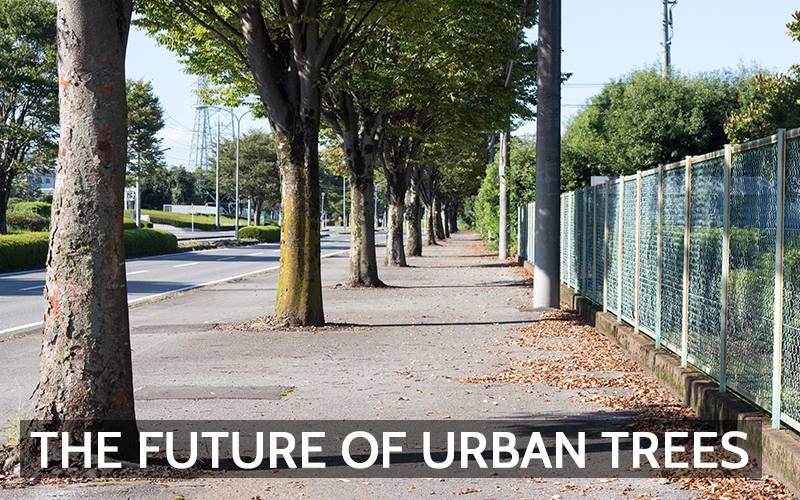In the push for more sustainable urban living, green spaces and trees play a crucial role in reducing pollution, enhancing air quality, and creating a sense of community around nature’s beauty. Yet, as cities grow, finding space for greenery becomes increasingly challenging. Rising pollution, limited land, and the heat island effect are just a few issues urban planners face when trying to maintain and expand green areas.
In response, cities are exploring innovative strategies to maintain and enhance their green spaces and urban forests, ensuring they continue to provide essential environmental and social benefits.
The Challenges of Expanding Green Spaces in Urban Areas
As urban populations grow, so does the demand for space. This expansion often comes at the expense of green areas, as trees and parks are replaced with high-density developments and infrastructure. The result is a reduction in natural spaces, which can intensify pollution and make cities hotter, increasing the strain on public health and urban ecosystems.
Moreover, maintaining green spaces in heavily polluted areas presents its own challenges. Urban trees struggle to survive in environments with high levels of CO₂, heavy metals, and other pollutants. This makes it difficult for cities to depend on trees alone for natural air purification, especially in densely populated areas where pollution levels are significant.
Technology and the Evolution of Urban Green Spaces
To address these challenges, urban planners and environmental scientists are turning to technology. Cities are incorporating green roofs, vertical gardens, and mini-forests to maximize green coverage in limited spaces. These innovations can capture carbon dioxide, regulate urban temperatures, and help manage stormwater, all while using minimal space.
Green infrastructure, such as rain gardens and green belts, offers ways to make cities more resilient to climate change. For example, by planting vegetation along streets and integrating parks with permeable surfaces, cities can reduce stormwater runoff, alleviate flood risks, and improve air quality.
In addition, some cities are implementing sensor-based air quality monitors and data-driven urban planning tools to assess the impact of green spaces on air quality and identify areas where more greenery is needed. These approaches enable targeted solutions that make green spaces more effective and sustainable in the long run.
The Role of Artificial Liquid Trees in Urban Air Quality
One of the latest technological developments in urban greening is the use of algae-based photo-bioreactors, also known as “liquid trees.” Developed as a supplement rather than a replacement for traditional trees, these systems aim to address the unique pollution challenges faced by densely packed cities.
Liquid trees, like Serbia’s LIQUID 3 project, use tanks filled with microalgae to absorb carbon dioxide and release oxygen, mimicking the photosynthesis process of trees. A single liquid tree can be as effective as multiple 10-year-old trees, making it a potential solution for urban pockets where space constraints prevent traditional planting.
Moreover, liquid trees are designed with multifunctional city use in mind. Equipped with solar-powered lighting, charging stations, and even seating, they can blend seamlessly into the urban landscape, providing both environmental and practical benefits in areas where green space is sparse.
The Skepticism Around Algae-Based Alternatives
While the concept of liquid trees is promising, it has sparked debate. Critics argue that algae tanks cannot replace the diverse benefits provided by natural trees. Unlike trees, which offer shade, promote biodiversity, and help prevent soil erosion, liquid trees serve only a single function—carbon capture. Furthermore, natural green spaces provide social and recreational benefits that a tank of algae cannot replicate.
Nonetheless, proponents of algae-based solutions stress that these innovations are not meant to replace forests or natural greenery. Instead, they offer a supplement for cities where pollution is severe, and space is limited. As urban populations grow, algae-based solutions may play an important role in a broader, multi-faceted approach to sustainable urban development.
Looking Forward
As cities continue to grow, finding ways to preserve and expand green spaces will remain a critical challenge. The integration of technological solutions, like green roofs and algae-based photo-bioreactors, offers new possibilities for creating sustainable urban environments. By combining these innovations with traditional green infrastructure, cities can work toward a future that prioritizes both environmental health and quality of life for their residents.
Urban planners and city officials face tough choices as they work to balance development with sustainability. By exploring both traditional and technological solutions, cities can create a new vision for urban green spaces, one that enhances environmental resilience and supports urban populations well into the future.


